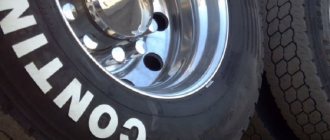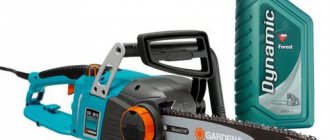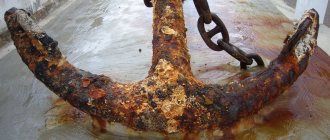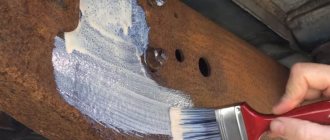Is it worth getting involved in such an unusual business as tire recycling? Rubber decomposes in 50-100 years. This is not the most impressive period when compared with the period of “natural” recycling of various types of plastics. Few businessmen are able to see prospects for further use in waste. But every year, tons of free resources literally disappear in city landfills and landfills.
A striking example of a promising business will be the recycling of old tires. This niche remains poorly developed so far, and the competition in it is very weak. According to statistics, domestic factories annually process only a quarter of the volume of used tires, which during the same period manage to end up in landfills. The garbage business has ceased to be part of jokes and has turned into a profitable business.
Why you shouldn't throw tires in a landfill
The number of road transport in the world is growing at a rapid pace. In areas with different climatic conditions, two sets of wheels are needed for summer and winter. The problem of tire recycling is facing many countries. The number of old tires is growing exponentially . Where to put old tires?
If large tires are simply thrown into a landfill, then the period of natural decomposition can reach 120 - 150 years .
As tires disintegrate, fine dust is formed that contains dangerous aromatic compounds. Decomposition products have carcinogenic properties. The harm to the environment and humans increases many times over if thermal decomposition occurs. During combustion, toxins are released into the atmosphere, which leads to an increase in the number of respiratory cancers. Decomposition products can enter groundwater and contaminate drinking water sources.
Disadvantages and advantages of recycling
The tire recycling business is one of those rare times where you can make the world a better place while making money. We already mentioned the timing of natural decomposition of rubber at the beginning of the article. When tires wear out, they release toxic substances into the air that are extremely harmful to humans. In landfills, during the process of decomposition, they pollute the soil and the planet as a whole, and all the same harmful substances are washed away by groundwater, which distributes them over vast territories.
A burning tower made of old tires is a different story. Soot, sulfurous acid and highly toxic components are quickly carried away by the wind. By recycling old tires, you will contribute to improving the environmental situation in the country. In addition to this bonus for nobility, the entrepreneur will be able to receive a number of other advantages:
- An inexhaustible (continuously replenished) source of raw materials.
- Wide choice of industrial enterprises as a market.
- Ease of production. You will not need highly qualified personnel. It is enough to train the employee to properly handle the equipment involved in processing.
The most active entrepreneurs sometimes receive support for their endeavors from the state. The modest list of shortcomings consists of only two points:
- Large initial capital. Investments in even the most modest enterprise will have six zeros in the tail.
- Difficulty finding a market.
The last point requires some clarification. There are indeed a lot of enterprises that use products obtained from tire recycling. The difficulty is that only a few will make contact with a “private owner”.
Harm to the environment (hazard class of tires)
There is an official document - GOST 12.1.007-76 called “ Harmful substances . Classification and general safety requirements." According to the classification, used car tires belong to hazard class 4 .
If the recycling process is disrupted, one tire contaminates 50 square meters of soil!!! and penetrates the soil to the groundwater level.
Restoration of the ecological balance after transportation from a contaminated area takes 3 years .
Old tires cannot be used to decorate flower beds and form fences; waste should be protected from contact with the soil to prevent infection.
Europe's largest tire warehouse is on fire between Madrid and Toledo
In addition to GOST, there is Federal Law No. 51 “ On Environmental Protection ”, which warns about the danger of mercury - class 4 waste, prohibits :
- the release of tires in close proximity to water bodies, both on the surface of the earth and near groundwater;
- Disposal of waste is unacceptable near populated areas, in forested parks, recreational and resort areas;
- near migration routes of birds and animals, near fish spawning grounds, in bird nesting areas.
The laws prohibit burning waste , which belongs to hazard class 4, since toxic substances enter the atmosphere and harm the health of humans, animals, and the entire ecosystem.
Tires belong to hazard class 4 due to the fact that they are used in production:
- natural rubbers;
- soot;
- silicic acid;
- artificial polymers;
- resin.
When tires decompose, tiny dust is formed, which upon close contact causes:
- allergic reactions;
- bronchial asthma;
- infectious diseases of the respiratory tract;
- oncological diseases of the respiratory system.
During thermal decomposition, tires can release substances of hazard classes 1 and 2:
- styrene;
- furan;
- lead;
- sulfurous acid.
These chemicals, when in contact with soil, soil, or rainwater, can pollute the air, land, and fresh water sources.
After a fire in a tire storage area, nothing grows on the soil for 15-20 years ; the land is no longer in use.
The natural decomposition time of tires can reach 120-150 years, during which time the environment becomes contaminated.
Tire pyrolysis
Pyrolysis or thermal decomposition is another option for recycling old tires. The essence of the method is the high-temperature processing of the rubber component with a limited air supply or in the complete absence of oxygen.
The purpose of this method is to extract fuel for stoves from artificial rubber. In addition to gaseous products, during the thermal decomposition of rubber, liquid and resinous hydrocarbon fractions are obtained.
Disposal is carried out in several stages in special pyrolysis plants. The main disadvantage of pyrolysis technology is that it is not environmentally friendly. During the disposal process, toxic substances are released, the neutralization of which requires additional costs. In a number of European countries, the use of this method is prohibited by law due to harmful emissions into the atmosphere.
Fine for unauthorized storage
Legislative acts provide for penalties for improper disposal and storage of old tires.
An administrative fine has been established:
- for individuals – 1 – 2 thousand rubles;
- for organizations – 10 – 250 thousand rubles,
- in case of non-compliance, activities may be stopped for up to 90 days;
- for individual entrepreneurs – 2 – 50 thousand rubles;
- for persons who are in the performance of official duties – 2 – 30 thousand rubles.
In case of serious harm to the environment, criminal liability is provided for:
- environmental pollution,
- clogging, depletion of water sources, both underground and surface;
- death of animals and birds;
- harm to fish stocks;
- damage to forestry;
- pollution of lands used for agriculture;
- harm to the plant world.
Liability measures in Russia are prescribed in Article 250 of the Criminal Code of the Russian Federation. Material penalties can amount to up to 80 thousand rubles or in the amount of wages or other source of income of the perpetrator for six months. The article provides for arrest for up to 3 months.
The liability measures are serious, so the only correct solution is to hand over old tires to a recycling collection point, sometimes they are located near a tire shop. Depending on the specifics of the work, some points accept old tires for free, while others will have to pay from 100 to 250 thousand rubles for a set of used wheels.
Where to get raw materials for production
In order for the production of crumb rubber from tires to be profitable, it is necessary to build a system for supplying raw materials for processing as coherently as possible. To obtain products in large volumes, it is important to use all possible sources of raw materials. Tires and tires are collected by:
- at motor transport enterprises, in bus and trolleybus depots;
- at landfills for household and industrial waste;
- in tire services.
A flexible pricing policy will help to establish regular supplies of raw materials, according to which organizations will have the opportunity to recycle old tires at a lower price.
In addition, raw materials for the production of crumb rubber can be accepted from the population by organizing stationary or mobile collection points for tires and tires.
What kind of rubber tires can be returned?
All types of tires can be recycled; only the material costs differ. The most difficult and expensive tire recycling is the destruction of torn, worn out, contaminated tires.
Types of recyclable materials
- Rubber tubes from bicycle, motorcycle, car tires.
- Wheels from strollers, bicycles, special equipment.
- Specialized tires that are puncture resistant.
- Studded old tires.
- Truck tires for cars and special equipment.
How much does crumb rubber cost?
What income can be generated by processing tires into crumbs with a capacity of 150 tons per month?
The average cost of rubber granules on the market is 150 thousand rubles. Accordingly, receiving 100 tons of crumbs monthly, we have 1.5 million rubles.
Also, during processing, 30 tons of metal and 20 tons of textile cord are formed, costing 90 thousand rubles. and 40 thousand rubles, respectively.
Thus, the total dirty income can amount to 1.68 million rubles. Subtracting monthly expenses from this amount, we get net profit. At the same time, the profitability of the enterprise will be influenced by such factors as the location of the enterprise (rental cost, transportation costs), the availability of sales markets, sources of raw materials, marketing policy and others. On average, investments in this type of business pay off within one and a half to two years.
Where to take old tires for recycling
The collection points for used tires differ according to the type of activity, the goals of the organization, and the status of the client. Perhaps some tires can be sold, the price for new sets is high. If the tires are in poor condition, then you need to recycle them.
Paid reception (driver pays)
Tire shops often have collection points for old tires where you can return your tires. Reception is carried out free of charge or for a small fee of 100 - 200 rubles for transportation costs for the delivery of raw materials. Once the batch is collected, the tires are disposed of at a recycling plant.
There are tire companies that have a recycling plan. Such organizations have a license to transport old tires.
Free recycling
Most often, free collection of tires for recycling is carried out by organizations with an environmental focus. They collect wheels and tires from individuals and organizations. Car enthusiasts with many years of experience in using cars strive to free up space and minimize harm to the environment. Monetary reward for such clients is not the most important thing; they are ready to hand over tires for recycling free of charge.
Acceptance of old tires for money (driver reward)
There are organizations that accept used tires and pay a monetary reward to the client. The payment is incentive and covers transport and cargo costs. Before delivery, you can familiarize yourself with the price list, which indicates the type of wheel and monetary compensation. Acceptance is carried out from individuals and private clients.
Payments are made depending on the wheel size . The cheapest are rubber inner tubes. Car tires vary in cost depending on their diameter. The larger the wheel, the more funds are allocated for recycling. Before delivery, please check current prices.
In addition to monetary rewards, car services offer profitable promotions :
- walk-in service for customers who return tires for recycling;
- crediting funds to the client’s card for subsequent servicing;
- free car wash;
- free tire inflation;
- providing discounts on auto products and services.
- Tire recycling plants accept wheels from organizations. The monetary reward is calculated depending on the batch of recycled tires and the number of kilograms. The price is calculated for one ton of tires. The cheapest are bicycle tires, car tires can be more expensive, and the most expensive are tires with studs.
Other Tire Shredding Methods
There are other, less common technologies for shredding old tires:
- The barodestruction method is an energy-intensive method of rubber processing, in which the raw material is brought to a fluid state in a powerful industrial press;
- Cryogenic method. Tires are cleaned and cooled using liquid nitrogen to a brittle state, after which they are crushed in special drum units;
- Ozone knife technology. An expensive method of processing vulcanized rubber, based on the effect of its destruction in an ozone-rich environment.
What is made from recycled tires
Using recyclable materials is economically beneficial and also minimizes the risk of environmental pollution.
Types of recyclable materials
The processing process begins with grinding the raw materials and dividing them into fractions:
- small rubber crumb from 1 to 5 mm, within the category there is a finer gradation, each type of crumb is used for the production of a certain type of product;
- a court made of textile materials is subjected to pyrolysis, after which it is used for the production of fuels and lubricants;
- metal parts are separated using magnetic installations and sent for remelting.
What can be made from recycled materials
At tire recycling enterprises, rubber wheels are crushed to obtain crumbs that can be used:
- production of rubber floor coverings;
- production of car accessories;
- special coating for children's and sports grounds;
- use as a component in asphalting roads;
- production of rubber shoes;
- production of sports equipment, for example, punching bags, mats, mattresses.
In technologically developed countries, old tires are used to produce new wheels with a new rubber profile applied to the old frame.
Fuel is also obtained from tires by pyrolysis.
Which room to choose
When choosing a room, it is necessary to take into account certain norms and standards:
- It is prohibited to dispose of tires near residential areas;
- The minimum distance must be at least three hundred meters.
- The ideal option for placement is industrial zones;
- The total area must be at least 350 sq.m.;
- The production site must be equipped with a full water supply and sewerage system;
- Electricity supply required.
Recycling tires into fuel and energy (methods)
Tires began to be used as an energy source relatively recently. Technologies have been developed that make burning tires profitable and safe. This method of disposal is used in developed countries.
Simple burning
The combustion plant is a rotating kiln with different temperature conditions. There is a high-temperature zone in the center, with colder air at the edges. Thanks to this device, are minimized - smoke and smell .
Among all processing methods, combustion is the least environmentally friendly method . High-class toxic substances - dioxins, lead, sulfur compounds - can enter the atmosphere. Sulfur derivatives are highly toxic and can enter the bronchi and lungs and cause cancer.
Pyrolysis
It represents the disintegration of tires in a special closed reactor at a temperature of about 500 degrees .
Thanks to modern technologies, the efficiency of the process has increased; it is used in a tire processing plant. As a result, several components are formed:
- liquid fuel , which can be transported and used;
- pyrolysis gas is used for engines, heating boilers, stoves;
- industrial gas;
- metal components.
Burning tires to produce thermal energy
When burning a ton of tires in thermal power plants, the same amount of thermal energy is generated as when burning a ton of coal. But this processing technology is energy inefficient, since the production of one tire consumes the energy contained in 40 liters of oil, and when burned, it releases energy equivalent to 10 liters of natural fuel.
Combustion is carried out at a temperature not lower than 1900 degrees. At lower temperatures, dangerous dioxins are formed, which makes the process harmful to the environment.
Methods for processing tires into crumbs
There are several methods used in tire recycling plants to shred old tires and obtain crumb rubber of different fractions for further use.
Mechanical grinding
A simple and common method for shredding waste tires. The raw materials are gradually exposed to specialized equipment, resulting in different particle size fractions and related materials.
Machining steps:
- mechanical grinding using high temperatures;
- grinding at room temperature;
- reducing the temperature of raw materials;
- destruction by pressing through matrices.
Barodestruction
Crumb rubber is produced by breaking the tire with a hydraulic press. Next, the raw material is subjected to heat treatment using high pressure and passing the raw material through a special chamber. The advantages of the method are easy separation of metal parts from the tire. However, the technology is energy-intensive , requires expensive equipment, and a lengthy process.
Application of rotary disperser
The technology is not widely used. The processing process requires preliminary grinding of raw materials and high energy costs . The equipment is designed to operate for 20-25 years. Using the installation, rubber particles 0.2 cm in size are pressed into a sleeve and, under the pressure of the rod, are passed through a small gap.
Ozone treatment
A fairly new method at a tire recycling plant. The full name of the processing method is ozone-dynamic method . Tires are transferred to an ozone environment, destruction occurs by cracking. The result is rubber crumb, metal court, textile component and other elements.
The advantages of the method include:
- low energy consumption;
- high productivity - about 100 cameras in 3 - 4 hours;
- long service life of production equipment - about 50 years.
Shock wave grinding
The method was first used in production about 20 years ago. Tires are frozen in special cryogenic chambers. Tires are crushed using low temperatures and subsequent exposure to a shock wave. Exposure is generated by electronic devices. The productivity of the methods is quite high, allowing you to process large volumes of tires without heating and harming the environment .
Processed products
There are two main products from tire processing: crumb rubber and metal. During the recycling process, an average of 600 kg of metal is extracted from one ton of used tires. Crumb rubber is used as a material for road surfaces, slabs at railway crossings, and rubberized tiles for sidewalks. It is also used in the manufacture of speed bumps and soft rubber coating for playgrounds, which ensures safety when children use them.
Unit design
The design of the shredder is a knife mechanism (shredder), which allows you to process tires, tubes and other rubber elements. With this method of grinding, the material retains its molecular formula and does not lose its elasticity. The performance of equipment depends entirely on its power rating.
Main components of the rubber processing unit:
- Electric motor - ensures the speed of processing rubber waste, recommended engine power is 4-5 kW.
- Box with cutting discs - crushes raw material to the required size.
- Crumb calibration grid - regulates the diameter of the resulting crumb rubber.
- Worm gear – eliminates jamming and jamming of material.
- Unit frame - ensures a stable position of the machine.
- Loading hopper
- Guide tray
The entire mechanism of the machine is placed in a housing, on top of which a loading hopper is installed. Before loading the material, foreign metal objects (spikes, nails, etc.) must be removed. Tires are cut into strips, reducing processing time.
Box with cutting discs
The main part of the unit is a shredder unit. The box contains heat-treated steel milling discs of high strength. They are quite wear-resistant and do not require frequent replacement during operation of the machine. Manufacturing the structure requires precise calculation of holes and cutting discs, so the work should be entrusted to the designer.
Grid for calibrating crumbs
A calibrating grid is installed under the box with the milling shafts, which allows you to adjust the diameter of the crumb rubber obtained when shredding tires in a shredder.
Worm gearbox
The mechanical gearbox converts angular velocity using a worm gear and allows you to process rubber material of varying elasticity without winding or freezing. The mechanical transmission of rotational motion is set in the range from 25 to 35 units, ensuring high performance of the unit.
Unit frame
Safe operation is guaranteed by the machine frame, made of profile materials. It ensures a stable position of the unit during the period of crushing and loading of raw material.
Loading hopper
The machine is equipped with a hopper for loading tire raw materials, which for convenience is located on the upper part of the body and a guide tray. They ensure a uniform flow of raw material into the shredder (shredder), preventing the formation of congestion during operation.
Tire cutting device
To cut tires and remove metal cord, a structure of a rack and a supporting frame is used. The housing contains a bar clamping system, which rotates together with the bar during cutting. The rack of the structure is equipped with a wedge-shaped knife that can be adjusted to a specific tire size. This design installation technology saves time on preparing consumables for further grinding in a shredder.
Tire shredding
The technological process of grinding involves the following procedure:
- Sorting of tire raw materials and removal of foreign metal (nails, spikes, etc.)
- Removing metal cord
- Cutting tires into strips
- Shredding raw material in a shredder
- Calibration of the resulting crumbs











